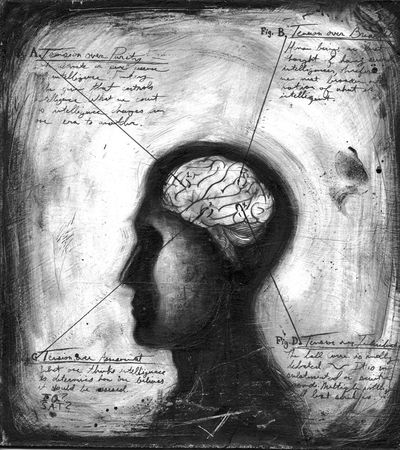The Adolescent Brain is Wired for Risk: Especially When Others are Looking
by Jason von Stietz - September 15, 2014

More than a billion dollars a year is spent in the United States each year educating teens on the dangers of drinking, smoking, drugs, reckless driver, and unsafe sex. However, risky behaviors among teens persist. In fact, illicit drug use among teens has increased over the past 20 years. Psychologists point to the still developing brain of adolescents for an explanation. Risky behavior among otherwise intelligent adolescents was discussed in a recent issue of The Atlanta Journal Constitution:
Adolescents are as smart as adults by their late teens; their memories are excellent, their reasoning skills sharp.
What they don’t have is the self-control and self-regulation of adults.
That is due, says Steinberg, to their developing brains. “Risk taking is a natural, hardwired and evolutionarily understandable feature of adolescence,” he writes. “Heightened risk-raking during adolescence is normal and, to some extent, inevitable.”
His book combines emerging brain science, parenting advice and political and education advocacy. Both his public policy and his parent recommendations are straightforward: Because it is hard to counter evolution and endocrinology, we ought to limit the opportunities for teens to exercise the immature judgment that comes with a developing brain.
In a telephone interview, Steinberg said, “I don’t want to send a message that we need to set our homes up as a kind of prison camp for kids. Kids need opportunities to be independent and have autonomy.”
“One reasonable example — given the fact we know a lot of experimenting with drugs or drinking or sex occurs in the afternoon hours when they are out of school and their parents are at work — is for schools to provide better after-school activities that have adult supervision,” he said. Funding for such programs could come from the budgets now underwriting ineffectual health education classes.
Steinberg encourages parents to require their teens participate in activities. “As a parent, you can say to your child, ‘You don’t have to do this specific activity, but you have to do something. You just can’t hang out with your friends. You can’t go over to Sally’s house because that’s the place where there are no parents.’ We know letting adolescents have a lot of unsupervised time in groups is a recipe for trouble. It’s not all kids. And it’s not all the time. But as a rule, it is true.”
There is no more vivid illustration of the impact of peers on teens than on the road. Letting teens drive with three friends in the car is akin to allowing them to drink and drive, said Steinberg. (Two recent accidents in which Georgia teens died, including a speed-related Murray County crash that killed four people, involved teens driving with friends. The Facebook page of the teen driver had a meme that reflects the role of peers. It read: "Good friends stop you from doing stupid stuff. Best friends do stupid stuff with you.")
Steinberg cites fascinating research on how teen behavior changes when kids have an audience of peers because the reward circuitry in their brains is activated. They are far more likely to drive fast, shoplift or drink with friends than when alone. In lab experiments, teens take more risks when told another teen is observing them on a computer screen.
While we often cast adolescence as something to be endured and survived, Steinberg says it also can be seen as an opportunity if we understand what teens need to thrive. And that is support, engagement, opportunities and limits. The best predictor of adolescent mental health, he says, is parent involvement.
Read the Full Article Here

 Subscribe to our Feed via RSS
Subscribe to our Feed via RSS